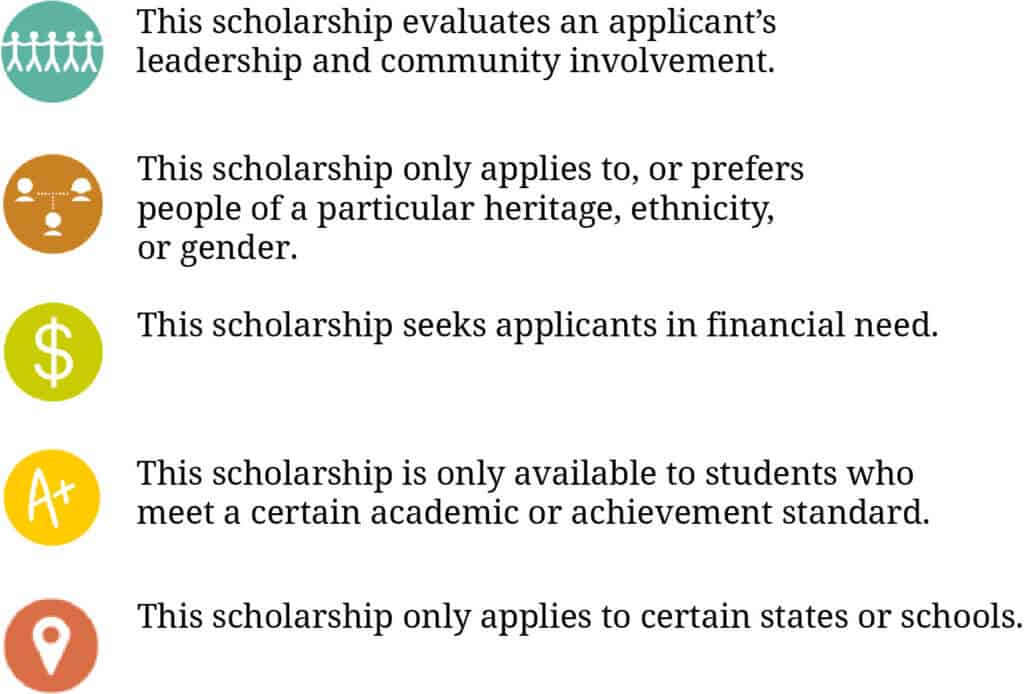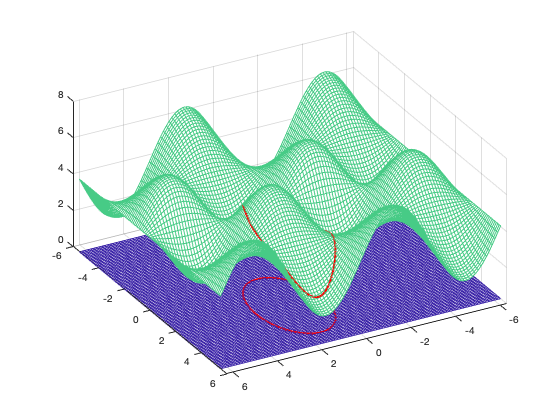
Special education is an education that considers the individual needs and characteristics of each student. This includes personalized teaching methods and the use of adapted equipment and materials. It also includes creating an accessible environment. It can also be described as an education system where teachers make every effort to make children feel comfortable. There are many types special education. In this article we'll take a look at the most commonly used types of special education.
More relaxed environment
The Least Restrictive Environment for Special Education is a basic principle of public education. It stipulates that students with disabilities should be educated in a classroom with their peers. What does this mean? For every child, the environment that is least restrictive for special education might look different.
Individuals with Disabilities Education Act is the law that defines the Least Restrictive Environment for Special Education. The LRE should be considered when drafting an Individualized Education Program. This is a crucial component of the IEP process. To ensure the student receives the right services, the IEP team must carefully review the LRE.
Individualized education plan (IEP)
An Individualized Education Plan or IEP describes how a student will learn. It also specifies the methods and services that teachers and support providers will use. An IEP must be developed taking into account the following key points: assessing the skills of a student with any disabilities; evaluating the impact of that disability on the student's learning; developing goals and objectives that meet the student’s needs; and determining the environment that is least restrictive for the student.

An IEP should also include the child's current performance in school. These data are derived from individual and classroom tests. These tests are usually given at reevaluations. It is also possible to gather information about the child's performance from parents and other sources. You should also include information in your IEP about how disability affects your child's participation with general curriculum.
Structured educational environment
Students with special needs receive intensive support in a structured learning environment that allows them to increase their functioning. Students are able to focus on academic tasks while also communicating with their teachers. Students also get support when managing their behavior. A structured educational environment is designed to help students achieve grade level through routines and structure.
Students with special needs may have a variety of needs, ranging from learning disabilities to speech and language impairments. They may also have emotional and behavioral disorders or physical disabilities such as muscular dystrophies. Depending upon the type of disability, students might require more or less teachers, specialized gear, and special physical adaptations.
Discrimination
Discrimination within special education is complex. While the IDEA is an important tool to help ensure equitable educational opportunities for all students, it also relies on widespread assumptions about disability and race. IDEA is particularly reliant on people who evaluate students. This belief holds that there will be discrimination in these evaluations.
Racial and ethnic differences in how children are viewed can impact the identity of those with disabilities. Jesse, Michael and Jesse are two examples of unconscious and structural racism that influenced how they were perceived. Furthermore, a child's disability label can be used to push out difficult children or make them eligible for more resources. This could lead to other troubling school practices.

Response to intervention model
The Response to Intervention Model (RTI), is a teaching approach that focuses specifically on individual needs and differentiates instruction. Students who fail to respond to instruction are moved through a series intensive interventions. This model was originally used in special education but is widely used in public education.
Response to Intervention, a district-wide educational strategy, is for students at higher risk of academic failure. This program uses research-based interventions to help students achieve their goals and move on in general education. Students are constantly evaluated to ensure that the interventions are working. The program usually lasts approximately ten to twelve weeks, depending upon the student's needs.
FAQ
How much does homeschooling cost?
Homeschooling is free. There are no set fees. Some families charge between $0-$20 per lesson. Other families offer no-cost services.
However, homeschooling does require dedication and commitment. Parents need to make sure they have enough time to spend with their children.
They also need to have access book, supplies, books, and other learning resources. To supplement their education, homeschoolers may need to use community programs and events.
Parents must think about the cost of transport, tutoring, and other extracurricular activities.
Homeschoolers need to be prepared for special occasions, field trips and vacations.
How do I select my major?
Students choose their majors according to their interests. Some students prefer to choose a subject they like because it's easier than other subjects. Others want to pursue a career for which there are no jobs available. Others decide to major because they want to earn money while studying. No matter what your motivations, it is important to consider the job that you may be interested in after graduation.
There are many ways to get information about different fields of study. You can talk to family members or friends about your experiences in these areas. You can check newspapers and magazines to see if any jobs are listed. Talk with a guidance counselor at your high school to ask about possible careers. Visit Career Services at the local library or community centre. Your local library has books on a variety of topics. Use the Internet to search for websites related to specific careers.
What is homeschooling, exactly?
Homeschooling refers to a way in which children are taught at home by their parents. It's also known as home education, self-education, and home educating.
If you want your children to learn at home, then homeschooling can be a great option. They can receive a high-quality education at home.
Parents educate their children from birth until they graduate high school. They choose which subjects to study and how long each subject should last. Every subject is taught by the student in his/her own time.
When to start teaching children is up to the parents. Many schools recommend that children attend classes from age four until twelve years old. However, some families wait to teach their children until they are old enough to do so.
Parents may use any number of resources to guide them through the curriculum. Books, videos, websites, and even magazines provide valuable lessons.
Many families find that homeschooling works well with their busy schedules. It allows parents to spend more quality time with their children than traditional public schools.
What is early child education?
Early Childhood Education (ECE) is a field that helps children to become healthy and happy adults. It includes everything from teaching them how to read to prepare them for kindergarten.
Early childhood education has the goal of helping children learn and grow by offering them age-appropriate experiences.
Early childhood educators are frequently called upon by parents to assess the developmental needs and abilities of any child they encounter. This assessment is used to determine if a specific program would be beneficial for each child.
Parents also have the opportunity to meet teachers and other professionals who are familiar with working with young children in early childhood programs.
Early childhood education also requires parents to play a significant role. They must know how to properly care for their children and offer guidance and support when needed.
Parents are also welcome to participate in activities to help their children learn skills they will use throughout their lives.
Preschool education is sometimes called early childhood education. However, this term can be used interchangeably with daycare centers. Prekindergarten education begins at three years of age, but early childhood education can begin around three.
Statistics
- Data from the Department of Education reveal that, among 2008 college graduates, 92.8 percent of humanities majors have voted at least once since finishing school. (bostonreview.net)
- Think of the rhetorical power of nineteenth-century abolitionist Harriet Beecher Stowe, Martin Luther King, Jr., or Occupy Wall Street activists with their rallying cry of “we are the 99 percent.” (bostonreview.net)
- These institutions can vary according to different contexts.[83] (en.wikipedia.org)
- They are also 25% more likely to graduate from high school and have higher math and reading scores, with fewer behavioral problems,” according to research at the University of Tennessee. (habitatbroward.org)
- Among STEM majors, that number is 83.5 percent. (bostonreview.net)
External Links
How To
What is vocational training?
Vocational education is an educational program that prepares students to work after high school and college. It teaches them specific skills for specific jobs (such as welding). You can also get on-the job training through apprenticeship programs. Vocational Education is different than general education. It focuses on specific careers and not learning broad knowledge for the future. The goal of vocational education is not necessary to prepare people for university study but to help them find jobs upon graduation.
Vocational education can be offered at any level of schooling: primary, secondary, college, university, technical institutes and trade schools. There are also many specialty schools like nursing schools and law schools, legal schools, medical schools and dental schools as well as veterinary medicine, veterinary medicine, firefighting, police academies and military academies. Many of these schools offer both academic instruction and practical experiences.
In recent decades, many countries have made large investments in vocational training. However, the effectiveness of vocational education remains controversial. Some critics claim it is not effective in improving students' employability. Others argue that it helps them prepare for life after school.
The U.S. Bureau of Labor Statistics has estimated that 47% of American adults hold a postsecondary certificate or degree related to their current occupation. This percentage is higher among those with higher education. 71% percent of the 25-29 year olds with a bachelor's degree are currently working in fields that require postsecondary credentials.
According to the BLS in 2012, almost half of Americans had at the least one type of postsecondary credential. One-third of Americans had a two year associate degree. Only 10% held a four-year bachelors degree. One in five Americans has a master's or doctorate.
The median annual salary for people with a bachelor's was $50,000. This compares to $23,800 for those who don't have a degree. For advanced degrees, the median annual wage was $81,300.
For those who did not complete high school, the median wage was only $15,200. Earn $13,000 per annum for those with less high school diplomas.